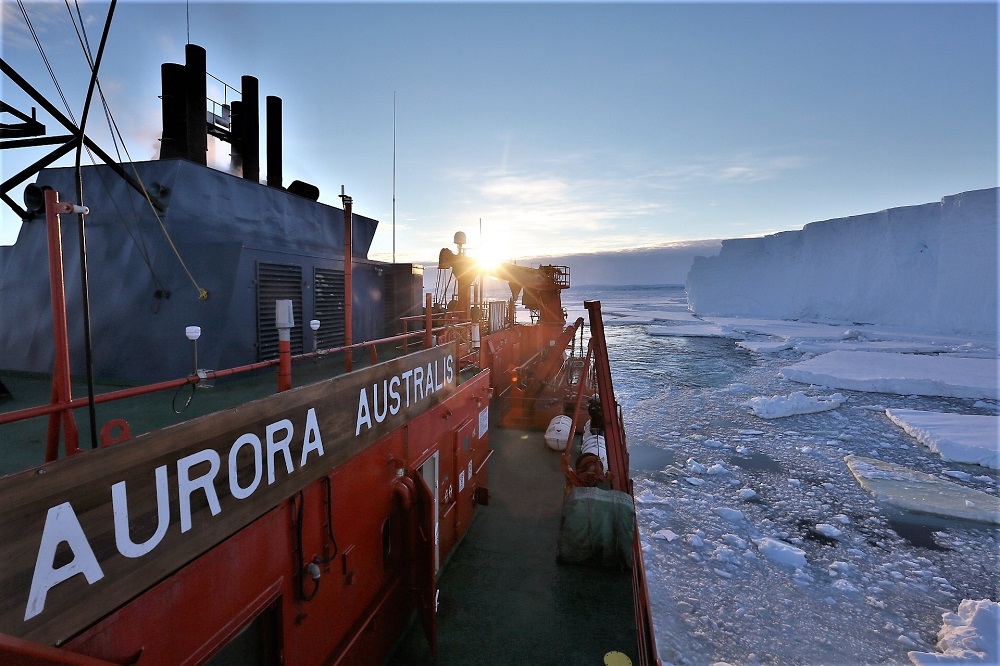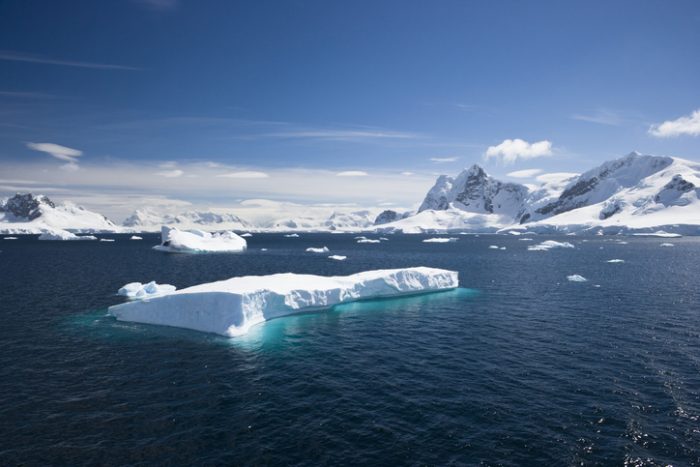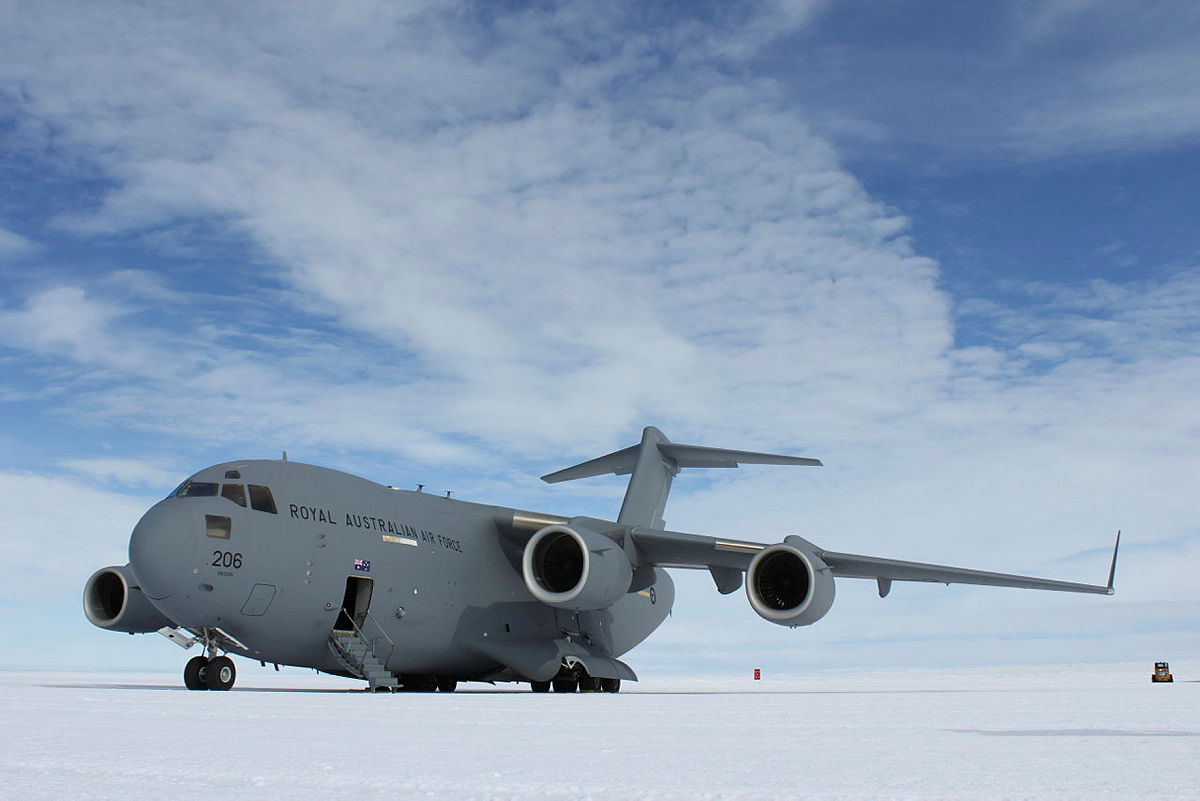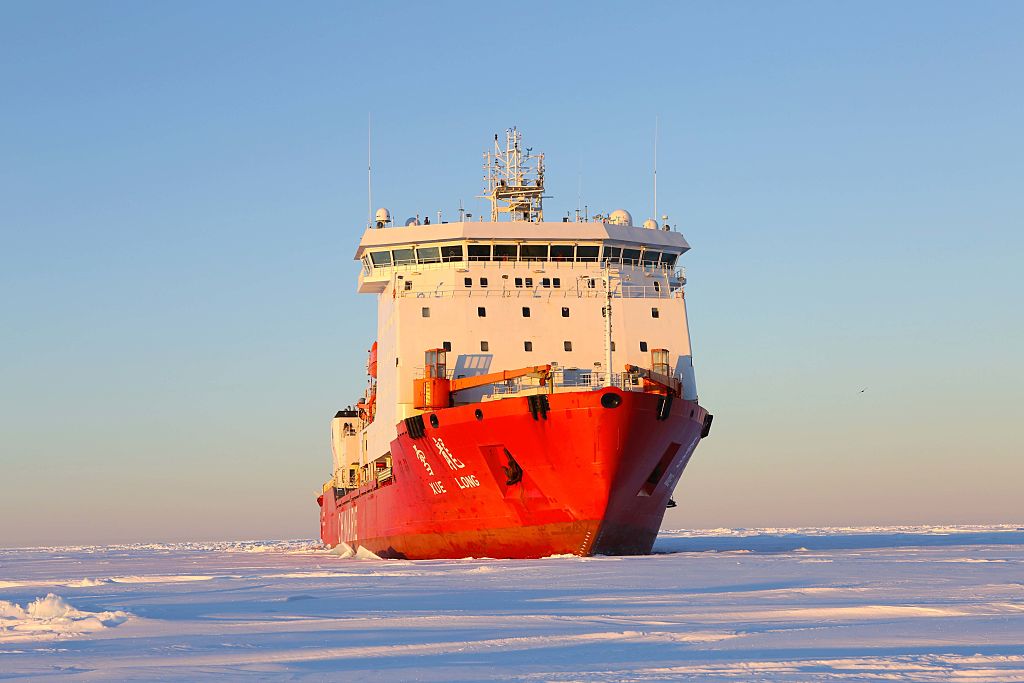
The Antarctic Treaty System is a consensus arrangement that has been in place for more than 50 years. It worked well in the 1960s, when nuclear weapons were seen as the key to global security. But this Cold War peace agreement is inadequate to respond to the security challenges of the 2020s.
Most Australians rarely think about Antarctica, and what discussion does arise is often confused, particularly on the contention that Australia holds 42% of the continent. This is not an accepted claim nor is it recognised by even our closest ally, the United States. Chinese and Russian movements in the Australian Antarctic Territory are worrying, but the real threat is our own failure to craft a security strategy for the region.
There’s a broad assumption that the Antarctic Treaty settled the continent’s future, but the issue is far from resolved. International-law specialist Don Rothwell notes that it’s in a ‘complex holding pattern’. But how long it can hold? The treaty wasn’t intended to be a long-term fix; it’s a stop-gap solution to the issue of who owns the continent. The 1950s Western fear of a ‘red’ continent has materialised, however, and while the Russians are active it appears that China is the emerging heavyweight there.
A second problematic assumption is that the treaty grants sovereignty to the seven claimant states (Argentina, Australia, Chile, France, New Zealand, Norway and the United Kingdom). It doesn’t. Discussion of sovereignty is suspended as long as the treaty is in effect. Signatories are not permitted to bolster existing claims, modify or challenge claims, or make new claims. The US and Russia, which don’t recognise any of the territorial claims frozen by the treaty, are afforded the opportunity to make a territorial claim at a later stage.
Areas of ambiguity are a further challenge. There’s the question of dual-use infrastructure, particularly in terms of satellite and space-development programs. The US GPS, Russian GLONASS and Chinese BeiDou systems are at various stages of operation on the continent. Scientific applications are evident, as are military uses.
The broader issue of militarisation is another ambiguous area. The treaty prohibits acts of a military nature, including military base development, military manoeuvres and weapons testing, but it allows military personnel and equipment in support of scientific research or ‘any other peaceful purpose’. This vague language is ripe for exploitation, and it’s probably already occurring. What constituted peaceful purposes in the Cold War is far different in today’s reality. Advances in military technology, particularly in the cyber sphere, make grey-zone activities the new normal.
Ambiguity is also apparent when it comes to oil and gas exploration. Despite the 1991 Madrid Protocol banning exploitation of mineral resources, states are surveying for deposits—which is allowed as long as it’s done for scientific research. It’s well documented that China conducts mineral exploration on the continent, and Beijing has tested the same underwater exploratory methods in Antarctica that it employs in its quest for resources in the South China Sea. Mapping of resource wealth often precedes a territorial challenge.
The basis for the treaty system—environmental protection—is often used to mask strategic ambitions. Framing the discussion about Antarctica in terms of it being ground-zero for climate change is misleading. The system predates global-warming concerns and doesn’t deal with the issue. Nor do environmental protocols (like the Paris Agreement) mention the polar regions.
Russia’s activities on the continent have raised some concerns, particularly for Australia. In 2016, the Russian navy resumed its Antarctic expeditions after 30 years. Russia focuses on hydrographic surveying of minerals, and its Vostok base, the biggest in the Australian Antarctic Territory, is close to the continent’s largest deposit of fresh water.
The treaty allows inspections, and parties must provide open access to all their installations and activities. In 2018, a team from Norway inspected Russia’s Antarctic endeavours, with some alarming findings for Australia. The inspection was to include the first examination of Russia’s new Antarctic runway, dubbed ‘Perseus’, but the inspection team could find ‘no contracts nor coordinates’ for the installation. When the team contacted the neighbouring Russian airstrip, ‘Novo’, they were advised that landing at Perseus would be problematic because an Ilyushin transport aircraft was due to arrive there. They opted to conduct an aerial observation of the Perseus development, but found that the Ilyushin was parked in the middle of the airstrip, blocking access. The team noted considerable activity at the Russian bases, with many aircraft. Russia had advised that it needed Perseus as a back-up runway for Novo activities, but there may be a longer-term strategy at play.
The fragile treaty system is further threatened by the increasingly complex international strategic environment. As I see it, there are three possible futures for the system.
It might limp on and provide enough of a framework to keep cooperation and consensus alive in the region. Review mechanisms might be activated and international law and norms might find a way to continue operating.
Or it might fold up, with the question of sovereignty reverting to the original claims and the US and Russia agreeing to split the remaining sliver of the continent between them. That would leave China and the other international players to pack up and go, which seems very unlikely given how much they’ve invested there.
The third, and most likely, possibility is that the treaty system collapses as great-power competition shapes the continent’s trajectory—and while Australian government departments shuffle the blame and scramble for a strategy. So, what should we be focusing on now to avoid this scenario?
Canberra should try to head off China’s ‘Dome A’ challenge. Beijing has put in a proposal to make Dome A a specially managed area within the Australian Antarctic Territory. Strategically, it’s the highest point on the Antarctic Plateau and unrivalled globally in terms of space signals and observation. Australia should consider submitting its own proposal for Dome A, which could argue that Chinese activity would overlap with scientific research and increase the chance of accidents. Dome A could then be managed by Australia, cutting Chinese access to the site and giving Australia’s space industry an edge.
The Department of Defence should be given responsibility for shaping and delivering Australia’s Antarctic strategy (it currently sits in the environment portfolio). That’s not unusual; the 2018–19 Chilean and Argentinian inspection teams included officials from their defence departments. Australia doesn’t send defence representatives to keep tabs on our Antarctic territory. Since 1963, we have undertaken a mere nine inspections, some of which weren’t in our territory because we don’t have the capacity to reach the most isolated stations. With the defence department safeguarding our Antarctic interests, we might be better placed to conduct more inspections.
We also need to pay closer attention to the hybrid strategies of states like China that may be exploiting Australia’s stake. What might look like cooperation is often driven by competition and can quickly reveal conflicting motives. Of particular concern are the lines of funding for our Antarctic activities coming from Beijing.
The Antarctic Climate and Ecosystems Cooperative Research Centre, a government-funded initiative and Australia’s leading Antarctic research body, prides itself on international cooperation. In 2017–18, China’s First Institute of Oceanography provided the centre with $3.25 million, out-financing the Australian Antarctic Division. In the previous year, China provided more funding for the centre’s activities than both the Antarctic Division and the CSIRO. Complications with finance from foreign agencies led to the creation of the Foreign Influence Transparency Scheme in 2018. Given the centre’s funding sources, it’s of concern that it’s not listed in the scheme.
Finally, Australia must deal with the inescapable challenge of sovereignty. That means coming to terms with the fact that we received what we call the Australian Antarctic Territory in the 1933 transfer from Great Britain. In assuming this title of sovereignty, we must question to what extent the territory is even ours to begin with. While I’ll leave the complexities of that issue to legal titans Rothwell and Gillian Triggs, it’s apparent that Canberra must be able to prove that between 1933 and 1961, Australian Antarctic activity was enough to consolidate sovereignty.
Antarctica is a global commons that’s rich in resources and strategically significant as a base from which the entire southern hemisphere can be accessed or targeted. Its future is in legal limbo. After 60 years, the treaty system appears to be intact. However, tensions simmer and unilateral strategies are at odds with the continent’s future.
It may be too soon to call time on the treaty system, but we need to seriously question the assumption that the Antarctic challenge will be determined by legal right and not by military might. Is Australia up to the challenge? If not, how do we get there?











